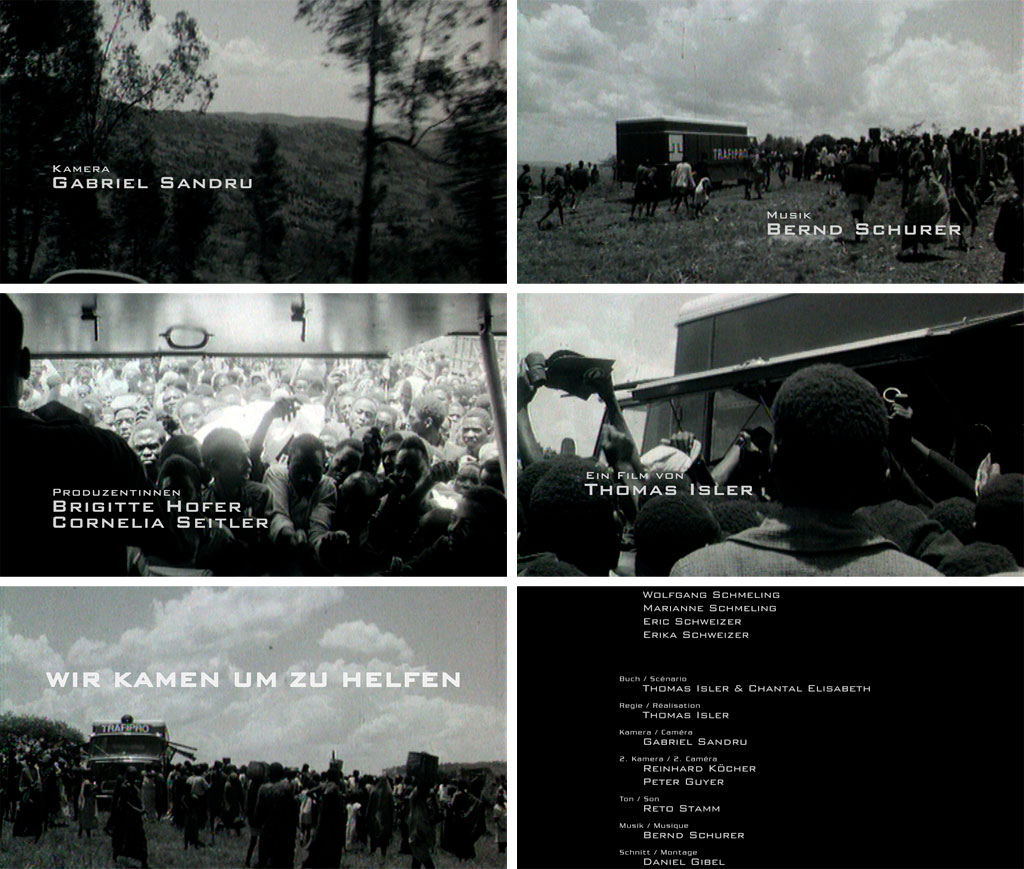Wir kamen um zu helfen
Dokumentarfilm, 87 min. / www.maximage.ch
Als sich die Schweiz in den 60er-Jahren in Ruanda stark machte, liess man sich von Beginn an auf ein gefährliches Spiel mit der Machtelite ein. Doch erst der Genozid von 1994 an 800’000 Menschen führte zu einem Überdenken der Entwicklungshilfe. Der Film lässt Beteiligte von damals zu Wort kommen – und geht der Frage nach, ob Gutes tun, auch immer Gutes bewirkt.
Documentary, 87 min. / www.maximage.ch
When Switzerland became involved in Ruanda in the 1960s, it entailed a dangerous game with the power elite from the start. It was the genocide of 800’000 people in 1994, however, that led to a rethinking of development aid. The film offers those involved at that time a chance to speak, as well as examining further the question of whether doing good always does good.
Nachdem ich die Rohfassung gesehen hatte, schlug ich dem Regisseur Thomas Isler für dieses Filmthema eine eher harte, kantige Schrift vor. Um die Anfangstitel optimal in die Super-8-Archivaufnahmen zu integrieren, suchte ich nach Interaktionsmöglichkeiten zwischen Bildinhalt und Typografie. Die Titel werden nun durch bewegte Bildelemente wie vorbeigehende Menschen aufgedeckt bzw. weggewischt. Beim Rolltitel entschieden wir uns statt der konventionellen Zentrierung für eine linksbündige Variante.
After viewing the rough cut of the film, I suggested to the director Thomas Isler, that he use a rather hard, edgy font. In order to integrate the opening credits in the Super-8 archive material, I looked for dynamic interaction between the picture content and the typography. The titles are uncovered or wiped away by moving content, as for example passing people. For the rolling titles we agreed upon for a left-aligned version.

© 2025 Brigae Haelg – brimp studio | Theme by Eleventhemes
